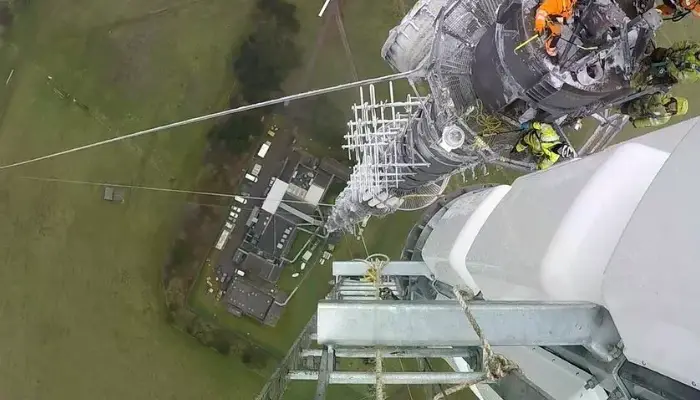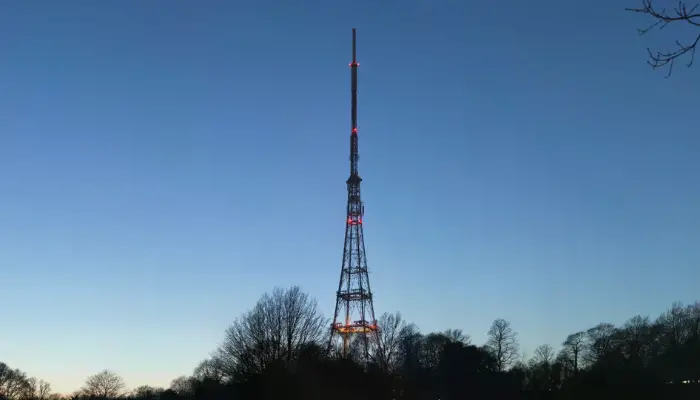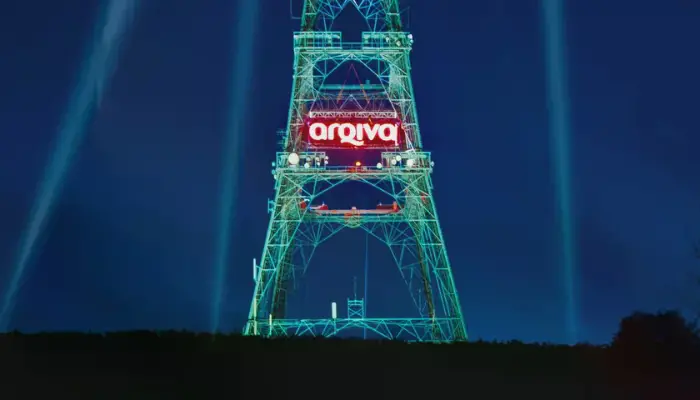A proud heritage
Arqiva has a rich and proud heritage in the world of television. Our history traces back to 1928 and the UK Government’s first Budget broadcast; it was here we provided the technology and transmission expertise behind the red briefcase’s television debut. We had already pioneered in radio by this point, transmitting the BBC’s first radio broadcast in 1922, so turning our attention to television was the next logical step.
Since its inception the television industry has continued to grow from strength to strength; from black and white, to colour, to five analogue terrestrial channels to multi-channel terrestrial, satellite and cable TV platforms. The development of the platforms has been driven by an almost insatiable appetite for more content from viewers. We have been at the heart of these developments every step of the way. However, it can be argued that it wasn’t until we introduced the world’s first DTT network in 1998 and the formation of Freeview in 2002 that multi-channel television content became widely accessible to the masses.
Analogue TV and low-power DTT signals were eventually replaced by high-power DTT network as a consequence of the DSO programme between 2007 and 2012. Since then, we continue to innovate and develop. We were a major player in the introduction of DVB-T2 (HD) to the platform in 2010, the completion of the 800MHz Clearance programme, a key partner in the launch of Freeview Play in 2015 and the completion of the 700MHz Clearance programme in 2020. We are also an active participant in industry bodies which continue to develop DTT, including Digital UK, Freeview, DTG, the DVB Project and Broadcast Networks Europe.
The Digital Switchover
It can be argued that the Digital Switchover (DSO) was quite simply the greatest, largest and most complex project in UK broadcasting history; delivered on time and below budget by us.
The task was to completely upgrade the 1,154 site UK television network in all 15 television regions in the UK between 2007 and 2012, including switching London over in time for the 2012 Summer Olympics.
The project had to be completed while keeping the existing TV services on-air. Along with our partners, we introduced numerous innovations during the course of the project including the use of reserve antennas to allow digital antennas to be built while still carrying analogue, dual analogue/digital relays to minimise switchover night logistics, and the use of IOT transmitters to minimise power consumption. Midway through the project we even changed the PSB-3 multiplex to broadcast in DVB-T2, allowing HD services to be enjoyed on Freeview for the first time.
We are proud to have delivered this project on behalf of our broadcast customers and received many plaudits for this success, none more so than from the Prime Minister himself:
“The Digital Switchover is a landmark project that is helping drive forwards our goal of creating a truly Digital Britain. The London Switchover marks another key milestone, and I congratulate Arqiva for successfully undertaking the largest digital network project this country has ever experienced. Public-service broadcasting has been a vital part of life in the UK for 75 years, helping make British broadcasting the envy of the world. Our Switchover will leave a truly 21st century television service, bringing greater choice and convenience to homes across the UK.”
The Rt Hon David Cameron MP, Prime Minister, April 2012
DTT service
We are responsible for managing and maintaining the 1,154 transmitter sites across the UK; including the more widely known sites of Black Hill, Emley Moor, Crystal Palace and Divis. To keep these services on air we have a highly experienced operational team led by the Service Management Centre (SMC) at Emley Moor, near Huddersfield. The SMC is the nerve centre of our operation, providing the front-end management and customer reporting of the services 24 hours a day, seven days a week, 365 days a year and by operating to a service management model based on ITIL v3.
The SMC works closely with our Field Service teams which includes our Antenna Services Group, Field Scheduling, Central Services (spares and logistics) and Change Management.
The field teams provide engineering support across the UK responding to faults, delivering maintenance and implementing projects. Our operational specialists provide expert engineering advice and third-line support ensuring longer term root cause analysis and rectification of faults.
These teams consistently deliver a very high level of service and can be relied upon during events of critical national importance. We provide this service on behalf of the UK DTT multiplex operators. We are also a multiplex operator in our own right, operating the commercial multiplexes COM5, COM6 and COM7.
If a broadcaster wanted their channel to appear on the DTT platform, they would need to secure enough space on one of the aforementioned multiplexes. Each of the national multiplexes varies in terms of reach, with the PSB multiplexes reaching 98.5% of the population and the commercial multiplexes approximately 90%.
Case studies

700MHz clearance

TV distribution and transmission

Digital Switchover
